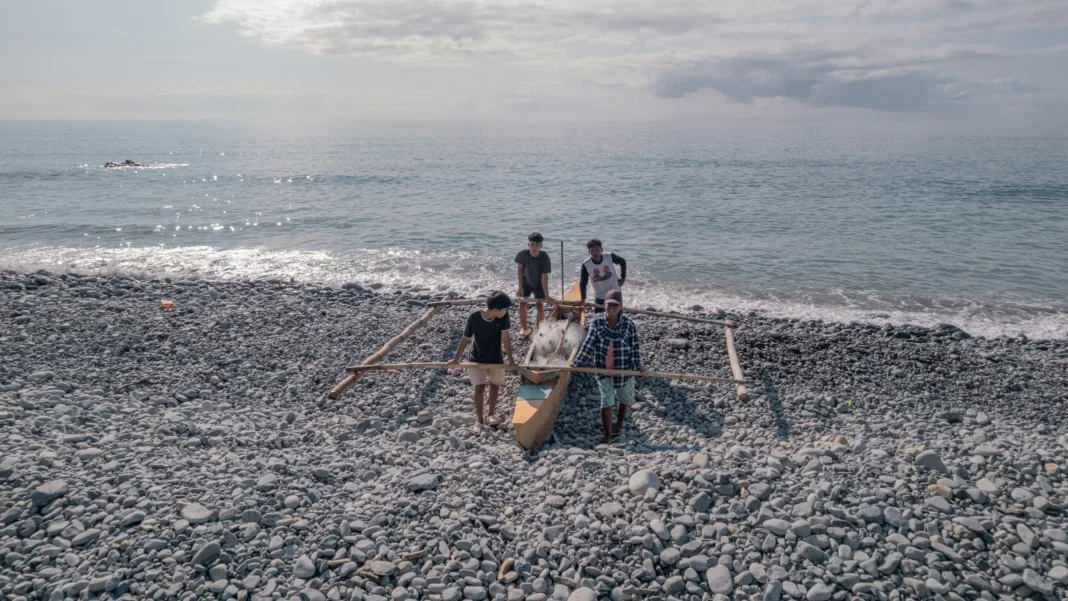As sea levels continue to rise due to global warming, the Philippines is among the countries that are most vulnerable to the effects of climate change. With its extensive coastal areas and low-lying communities, the country is at risk of losing large portions of its land to the sea. For coastal families in the Philippines, this presents a daunting reality and a constant fear of displacement.
The Philippine archipelago is made up of over 7,000 islands, making its shoreline stretch to a total of 36,289 kilometers. This puts millions of Filipinos living in coastal areas at risk of losing their homes and livelihoods. The threat of rising sea levels is not just a distant future for these families; it is their present reality. In fact, a recent study by the Asian Development Bank predicts that by 2050, 140,000 hectares of land will be completely submerged in the country, displacing around 735,000 people.
The Philippines, being a developing country, has limited resources and capacities to cope with the impacts of climate change. For the families living in coastal communities, this adds to their fear of losing everything they have. For many of them, the sea is not just a source of livelihood, but it is also their home, their culture, and their way of life. The thought of being forced to leave all of this behind is terrifying.
However, amidst this fear and uncertainty, many coastal families in the Philippines are choosing to be proactive and are taking action to adapt to the changing landscape. One such example is the community of San Pedro, located in the coastal city of Navotas. This fishing community, with a population of over 20,000, is one of the most at-risk areas in the country due to its low elevation and high exposure to storm surges.
But instead of waiting for the inevitable, the residents of San Pedro have taken it upon themselves to make their community more resilient to climate change. Through the support of various organizations and government agencies, they have implemented adaptation measures such as building elevated houses, constructing seawalls, and planting mangroves to serve as natural barriers against storm surges.
The community of San Pedro is just one of the many examples of Filipinos braving the challenges of climate change and taking a proactive approach to protect their homes and way of life. In the province of Leyte, the community of Tacloban, which was greatly devastated by Super Typhoon Haiyan in 2013, has also shown remarkable resilience and determination to rise above the impacts of climate change. They have embraced sustainable farming practices and constructed more resilient homes to withstand future disasters.
Furthermore, the Philippine government has recognized the urgency of addressing the effects of climate change and has taken significant steps to address it. In 2012, the country passed the Philippine Climate Change Act, which established the Climate Change Commission to coordinate government efforts in mitigating the impacts of climate change. The government has also launched various programs and initiatives aimed at reducing carbon emissions and promoting sustainable practices.
But more needs to be done. Coastal families in the Philippines need all the support they can get in their fight against the impacts of climate change. The government must continue to prioritize climate action and allocate more resources to adaptation measures. Furthermore, there is a need for increased international cooperation and support in addressing the issue of rising sea levels.
As daunting as the challenge may seem, the resilience and determination of the Filipino people give hope that we can overcome the impacts of climate change. Coastal families in the Philippines continue to face the fear of displacement, but they refuse to let it paralyze them. Instead, they are taking action and inspiring others to do the same. With collective efforts from governments, organizations, and individuals, we can protect our coastal communities and maintain our way of life despite the rising sea levels. Let us use this opportunity to come together and create a more sustainable and resilient future for all.


